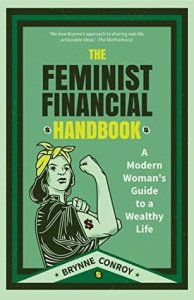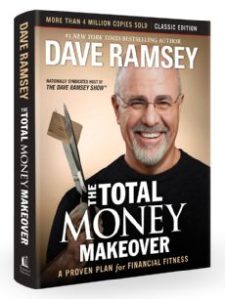Title: The Feminist Financial Handbook: A Modern Woman’s Guide to a Wealthy Life
Author: Brynne Conroy
Genre: Finance/Money
Trigger Warnings: Misogyny, gun violence (mentions), domestic abuse/intimate partner violence, mental health issues
Back Cover:
Live your wealthiest life: Sometimes the best way to stick it to the man is by doing well for yourself. There’s just one problem: it’s hard to do well for yourself when systemic oppression has placed innumerable hurdles between you and your aspirations. The Feminist Financial Handbook provides real motivation and resources for real women who may be struggling―not only those who have already accumulated wealth.
Overcome obstacles: The Feminist Financial Handbook provides actionable tips for women in business for overcoming these obstacles as they try to master money management and their lives. Because women’s experiences don’t exist in a vacuum relegated to their gender, the handbook explores financial issues with anecdotes and perspectives of women of different races, sexual orientations and abilities.
Find the answers to your money questions: Learn more about general financial planning principles, like saving or earning a higher income, and delve into issues that disproportionately affect women, like the wage gap or the long road to economic recovery after experiencing domestic violence. The Feminist Financial Handbook has stories and advice from women who have been there, worked through the struggle, and achieved personal success.
Learn from the frontrunner of the Femme Frugality blog: Written in the same passionate tone that has made Femme Frugality a two-time nominee for Best Women’s Finance Blog, The Feminist Financial Handbook acknowledges the financial struggles and oppression modern women face while providing actionable steps to live your wealthiest life and achieve personal success.
The Feminist Financial Handbook presents a feminist view on finances relevant to a post-recession economy. This book will walk you through how to:
- Decide what wealth and success means for you
- Earn more and negotiate effectively
- Master manageable money-saving methods
Review
I picked this up because my favorite feminist financial bloggers, the Bitches of Bitches get Riches, love this book to pieces, and I’m always down for a financial book that isn’t highly Problematic. I was pretty unimpressed right from the start, though. I was going to start this review by saying I wasn’t sure what the book is trying to be, but I eventually figured it out. The Feminist Financial Handbook is trying to be all things to all people, and so it ends up being only barely useful to most.
Here is a brief list of things it tries to cover in less than 250 pages:
- Prove a case that women are financially disadvantaged compared to men
- Provide a road map for people in the US and Canada to go for free or even get paid to get an undergrad degree (which gives an entirely too generous estimate of how many outside scholarships you can get considering I spent two years of high school applying to every scholarship I could find and received none of them)
- Give advice for dealing with financial abuse and abusive relationships
- List types of assistance available in the US and Canada for low-income households and how to apply and get approved for these
- How to manage parenting from a financial standpoint, as well as assistance options if you have a disabled child
- Protecting yourself financially in case of divorce
- And I’m very sure there’s more that I can’t remember off the top of my head
None of these are bad things to talk about, and I don’t object to anything here. My only problem is that it’s too short of a book to fully cover everything it wants to cover. It ends up being Baby’s First Introduction to Feminist Personal Finance. Not bad at all, but if you’re already pretty familiar with personal finance and/or basic feminist ideas, there’s not a whole not you’ll find on these pages that is new.
I absolutely see why the Bitches love this so much, and it really is a great introduction to the ideas presented. My problem is that it’s only an introduction, and I wanted more. If you’re at all familiar with these topics, treat this like a reference book – read only the sections relevant to your situation and don’t worry about the rest.



